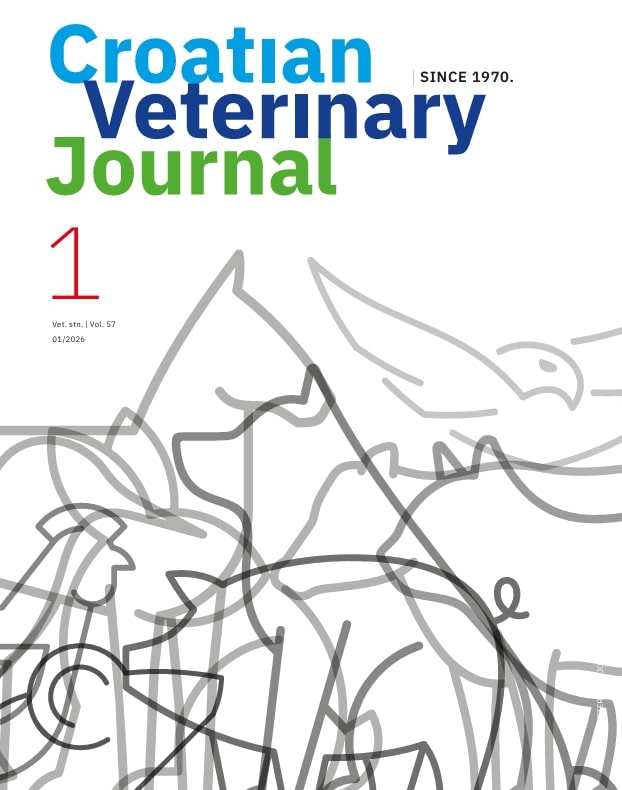Comparison of pregnancy rates of lactating Holstein dairy cows following the implementation of Presynch-Ovsynch, G6G, and Double Ovsynch protocols during the cool months of the year in the Qazvin plain of Iran
DOI:
https://doi.org/10.46419/cvj.57.1.4Keywords:
Double–Ovsynch, G6G, Presynch–Ovsynch, presynchronisation, dairy cattleAbstract
This study evaluated the effects of three protocols on the pregnancy rate of cyclic lactating Holstein cows 30 days after 18-h fixed-time artificial insemination (FTAI): Presynch-Ovsynch (PO; PGF2alpha –14 d–PGF2alpha –12 d–Ovsynch (OVS: GnRH–7 d–PGF2alpha (PG) –2d–GnRH)–18 h FTAI; n = 210), G6G (PGF2alpha –2 d–GnRH–6 d–OVS+FTAI; n = 216), and Double-Ovsynch (DO; GnRH–7 d–PGF2alpha –3 d–GnRH–7 d–OVS+FTAI; n = 226). The overall pregnancy rates 30 days post-FTAI for cows in the PO, G6G, and DO protocols were 39.5%, 41.2%, and 43.3%, respectively (P > 0.05). The highest and the lowest circulatory concentrations of progesterone were obtained in the DO and PO protocols, respectively (P < 0.01). The Double-Ovsynch protocol significantly increased the pregnancy rate in primiparous compared to multiparous cows (P = 0.04), and also compared to the PO protocol (P = 0.04). The use of PO, G6G, and DO protocols in a fixed-time insemination program for cyclic lactating cows did not result in a significant difference in the pregnancy rate 30 days post-insemination, and therefore, a protocol that costs less and is less labour-intensive should be considered.
Published
Issue
Section
License

This work is licensed under a Creative Commons Attribution 4.0 International License.
You are free to:
Share — copy and redistribute the material in any medium or format for any purpose, even commercially.
Adapt — remix, transform, and build upon the material for any purpose, even commercially.
The licensor cannot revoke these freedoms as long as you follow the license terms.
Under the following terms:
Attribution — You must give appropriate credit , provide a link to the license, and indicate if changes were made . You may do so in any reasonable manner, but not in any way that suggests the licensor endorses you or your use.
No additional restrictions — You may not apply legal terms or technological measures that legally restrict others from doing anything the license permits.

